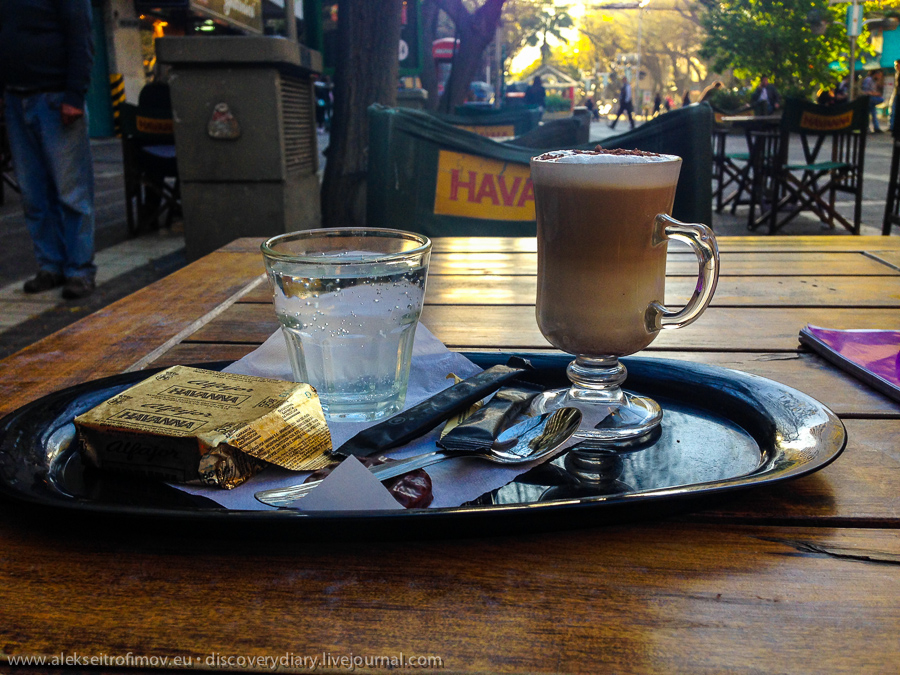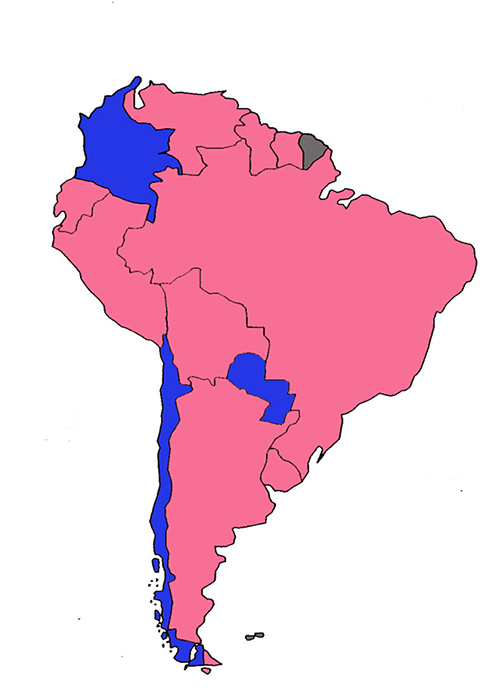After writing about the food in Argentina and Chile, I would like to devote a separate chapter to Argentinean and Chilean coffee. I love coffee, but only in particular preparations. Of course nothing on Earth is better than coffee in Italy. In Peru and Bolivia the coffee is rather disgusting. However once I arrived in Argentina, the land of Italian descendants, the coffee shares started going up! I discovered a coffee chain Havanna offering a truly endless variety of preparations and sampled every article with gusto!
I must say in general that the coffee terminology is turned upside down in every new Latin American country. Sometimes the same term has the opposite meaning within just one country. For example in Puerto Iguazu I described in detail to a lady in the coffee shop that I want the coffee that in Europe is called caffe latte. Finally she got my request and said: well that’s lastima! Lastima worked quite well in Buenos Aires, although produced some hesitation at times. However ordering a lastima in Mendoza resulted in a mini-espresso (very tasty)!!!
(This is true for everything though, not just for coffee. Particularly in Chile and Argentina they have invented an argo vocabulary for everything under the sun, and the Chilean vocabulary has nothing to do with the Argentinean one. In Chile in particular the pronunciation is terrible, the words are not finished, every sentence is interlaced with jargon. With some of my interlocutors, I had to ask them to repeat every sentence. Perhaps though they simply enjoyed exercising their linguistic superiority over a hapless gringo. In Argentina they have invented a whole separate grammar, they decline verbs in a different way. But at the end of the day this is wonderful. Adds a local feeling.)
So in order to avoid linguistic debacles, I often use the old trick “I’ll have what she’s having”. Sometimes I even unobtrusively photograph the item and then point to it on the screen of the iPhone. Otherwise explaining the particular coffee variety you want may take days.
This is what they call capuccino in Argentina. A little cup. Next to it packed in gold is an alfajor, see below. In Argentina they always bring a glass of sparkling water with the coffee – a wonderful habit, in my opinion.

Continue reading Coffee in Latin America →
